I slept on a £500 DreamCloud mattress for a month – it's the most comfortable affordable mattress I've tested this year
My DreamCloud Hybrid mattress review puts this budget-friendly sleep surface to the test
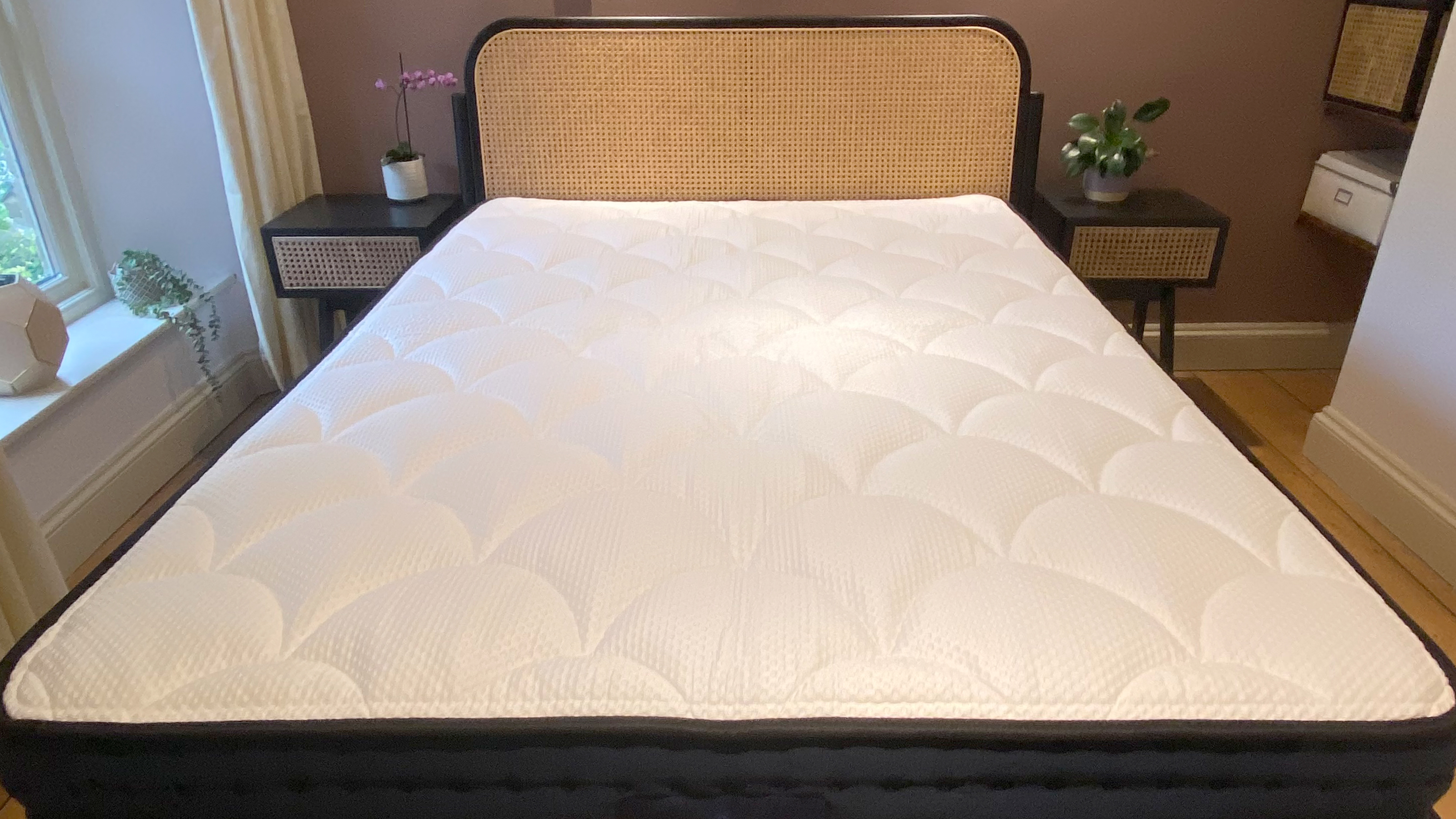
The DreamCloud Hybrid mattress is just over £500 for a double, and after testing it for a month, it's now my top recommendation if you're looking for a budget-friendly mattress.
-
+
Around £500 for a double
-
+
Comfortable for side and back sleepers
-
+
Better support than most mattresses at this price point
-
+
Good motion isolation
-
+
Good edge support
-
+
Decent breathability and temperature regulation
-
+
365-night sleep trial
-
-
Delivery to room of choice costs extra
-
-
Not much evidence the brand is working to lower its environmental impact
Why you can trust Ideal Home

In this DreamCloud Hybrid Mattress review, I put the brand's most affordable mattress through its paces to see how it performs compared to the best mattresses on the market.
In a nutshell
Considering the DreamCloud Hybrid only costs £525 for a double (that's a budget price tag in the mattress world), I was incredibly impressed by this mattress.
Compared to other mattresses I've tested at this kind of price point, including options from market leaders Emma and Simba, it's a decent depth, and it feels far more robust and well-made than its competition.
Its advertised 'medium' tension felt more like a 'medium-firm' to me, which was very welcome as it offered good support combined with a well-cushioned surface that padded my joints when I slept on either my side or my back.
Unlike any other mattress I've tested at this price point, it also offered decent edge support, which meant my husband and I could lie on the entire surface of the mattress without feeling like the edges were dipping.
We found it offered decent temperature regulation, responsiveness, and good motion isolation too, as did my parents when they came to stay during testing.
Can it compare to a mattress twice its price? No, it doesn't offer quite as much support as a more expensive mattress. And would it be nice to see the brand making more efforts towards addressing its environmental impact? Definitely. Simba is still leading the way in its circular design processes when it comes to affordable mattress-in-a-box hybrids.
Sign up to our newsletter for style inspiration, real homes, project and garden advice and shopping know-how
But is it the best budget mattress I've tested around the £500 mark? Yes, I'd recommend the DreamCloud Hybrid to anyone looking for an affordable mattress that won't break the bank.
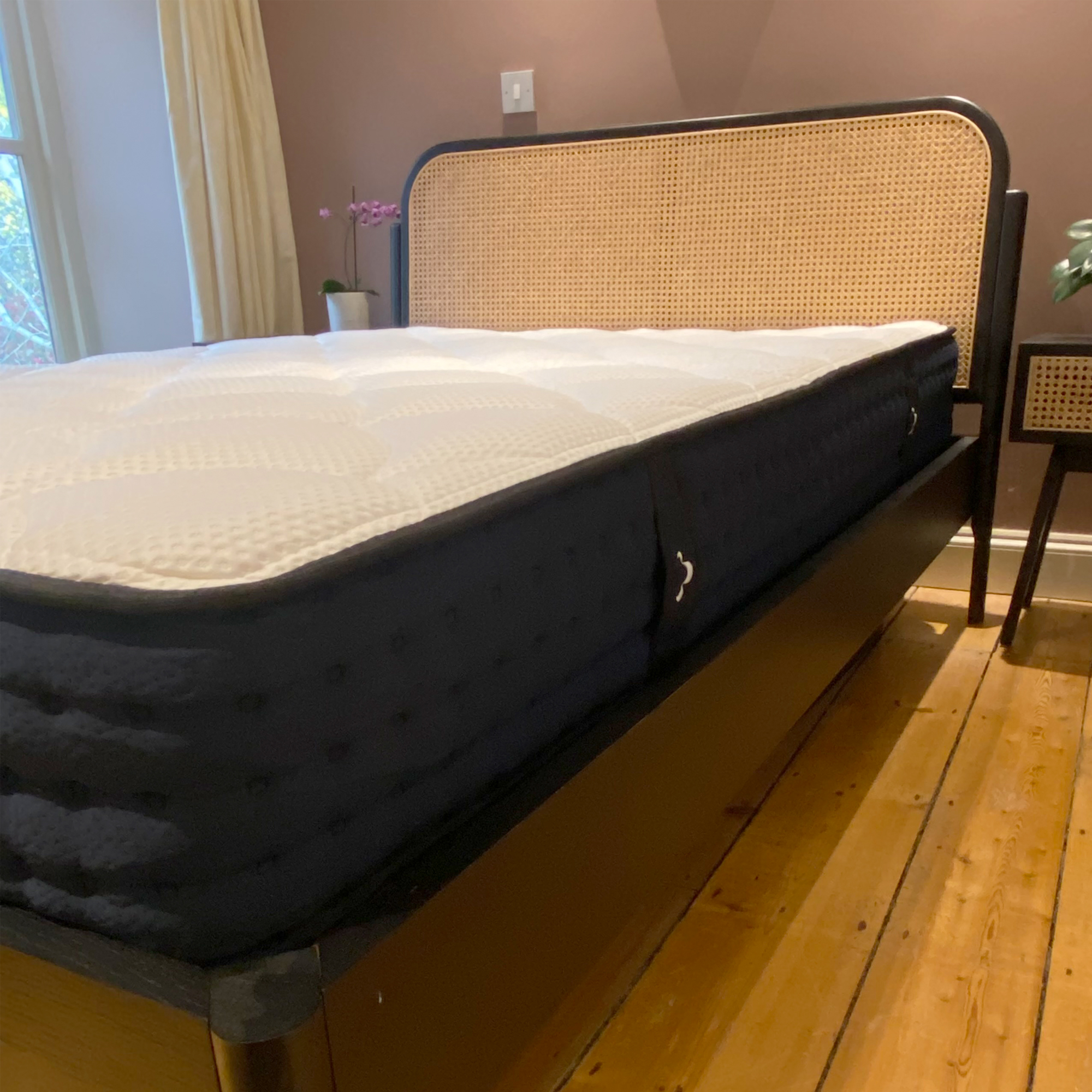
DreamCloud Hybrid Mattress review
Specifications
- Type: hybrid
- Construction materials: memory foam, pocket springs
- Sizes: single, double, king, super king
- Tensions available: medium
- Height: 25cm
- Side handles: yes
- Flip or rotate: rotate
- Manufacturer sleep trial: 365 night
1. Comfort
The DreamCloud Hybrid mattress is a 25cm deep mattress made up of five layers. There's a quilted cover, the memory foam top layer, what the brand dubs a 'dynamic transition layer' of foam, more support foam, and a steel pocket spring base.
Once it was on the bed, I was instantly impressed by how the mattress looked and felt, especially considering it's only £525 for a double, which is relatively cheap in the world of mattresses.
The quilted top layer is soft to the touch, and details like the piped edging make the mattress look and feel like good quality. This was in stark contrast to the under £500 mattresses I'd recently been testing for our best budget mattress guide, which felt a lot more basic in comparison.
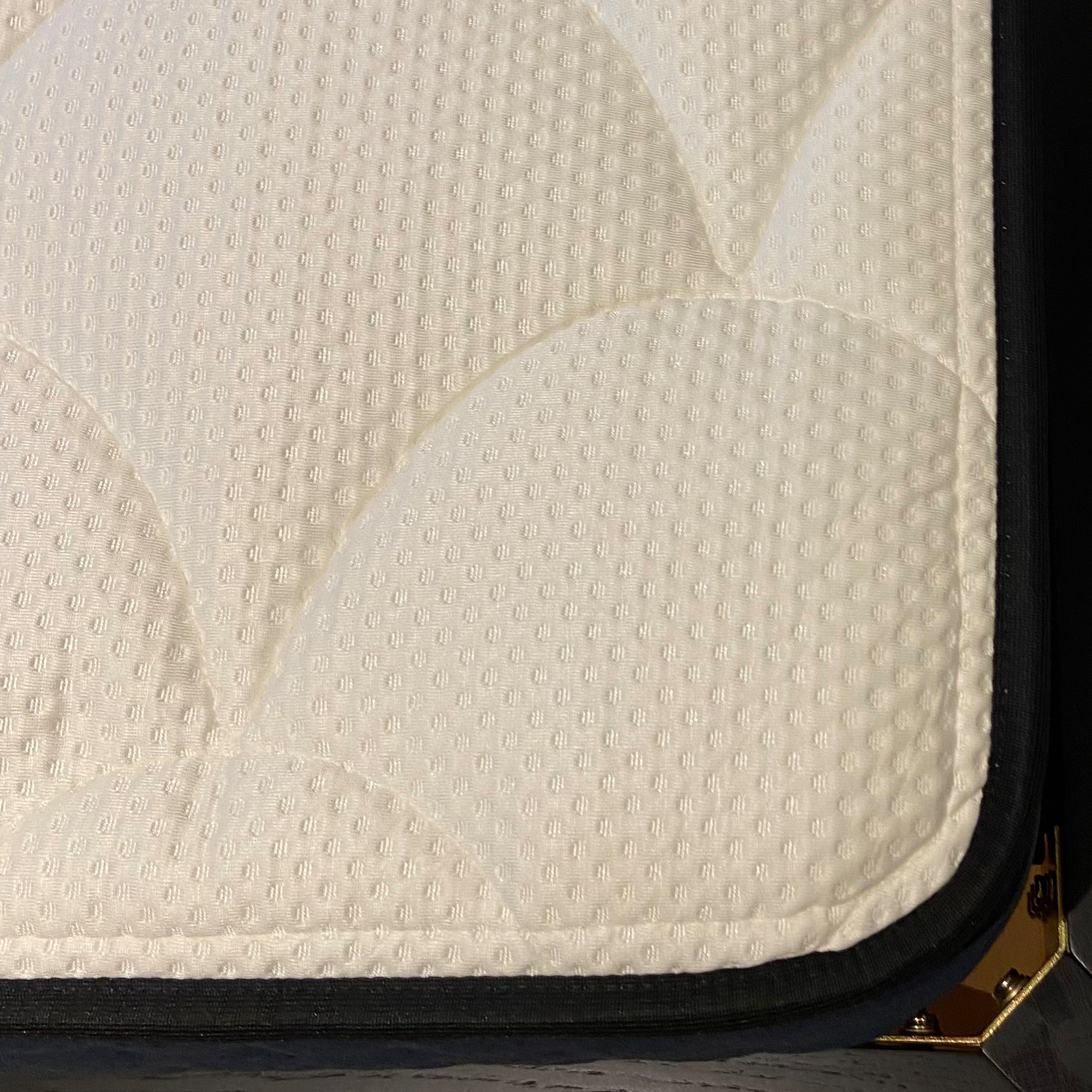
Once I laid down, I was even more impressed. I love a firm mattress, and although DreamCloud describes this mattress as a ‘medium’ tension, it felt on the firmer end of medium to me. This firmer feel is particularly welcome at this price point, as all similarly priced mattresses I've tested have lacked this kind of support.
I’m predominantly a side sleeper, although I sometimes sleep on my back. Side-sleepers like me generally prefer a medium-firm mattress that offers enough cushioning for the hip and shoulder to sink into the mattress so that the spine stays well aligned.
I found the DreamCloud was the perfect combination of both support and cushioning, which is probably why I slept so well on my side on it. The sumptuous quilted top layer made it feel dreamily comfortable too, with the padded top layer meaning I didn't need a mattress topper, as it cushioned my joints nicely.

Even after a weekend of painting my kitchen ceiling, which left my neck and shoulders in agony, I woke up without any pain, stiffness, or numbness in those areas after sleeping on this mattress.
When I slept on the DreamCloud Hybrid mattress on my back, it was also firm enough to prevent my hips and lower back from dipping too low, but simultaneously offered more than ample cushioning to support my lower back.
This meant that the lower back pain that I often experience after running didn’t bother me at all for the month when I slept on this mattress.
My husband, who also prefers a firmer mattress, was similarly impressed and remarked how supportive he found it.

2. Motion isolation
DreamCloud claims that this mattress offers ‘minimal motion transfer’, and when I slept on this mattress with my husband, we both agreed that the mattress's motion isolation was much better than we expected from a mattress at this price point.
My husband often comes to bed later than me, and on a lot of the mattresses I've tested around the £500 mark, I've found the reverberation of him getting into bed can wake me. But not on this mattress.
Similarly, if either of us moved around in the night, there was very little motion transfer. There was no roll together in the middle of the mattress either; we both stayed on our respective sides all night long.
Plus, when my two boys jumped into bed for a cuddle in the morning when I was reading my book, my mint tea didn’t go flying like it usually does!
Poor | Okay | Good | Great | Excellent |
|---|---|---|---|---|
| Row 0 - Cell 0 | Row 0 - Cell 1 | Row 0 - Cell 2 | x | Row 0 - Cell 4 |
3. Responsiveness
Although this mattress has a thick quilted top layer and is constructed using memory foam, I didn't find that it had any negative impact on the mattress's responsiveness.
I found the mattress surface bounced back and reshaped quickly, which meant that turning over in bed was easy, as the memory foam didn’t mould too much around my body.
In my opinion, that makes this mattress a good choice for anyone who prefers to lie 'on' rather than 'in' a mattress, or for anyone with mobility issues that means they find turning over difficult.
4. Temperature regulation
I'm not usually a particularly hot sleeper, but I've found I can be prone to overheating on cheaper memory foam mattresses where there is a lack of breathability.
Thankfully, DreamCloud specifically mentions the use of 'breathable' memory foam in this hybrid mattress, and over the month that I slept on this mattress, I didn’t ever wake up in the night feeling overheated.
Similarly, when I woke up in the morning, I wasn’t sweaty like I sometimes am. For this reason, I think that the temperature regulation of this mattress is good, especially considering its budget price tag.
Poor | Okay | Good | Great | Excellent |
|---|---|---|---|---|
| Row 0 - Cell 0 | Row 0 - Cell 1 | x | Row 0 - Cell 3 | Row 0 - Cell 4 |
5. Edge support
The main issue I've found with mattresses at this price point is a lack of edge support. It seems that's the first thing to go when manufacturers want to create a low-cost mattress. So I was very pleasantly surprised to find that this didn't seem to be the case with the DreamCloud Hybrid.
It has what DreamCloud describes as a ‘Reinforced Edge Spring Unit' which aims to provide even support across the whole surface of the mattress, and this is exactly what I found in practice.
Lying on this mattress, there was no sensation of the edges dipping away when I got close to them. In fact, the tension of the mattress felt equal wherever I lay on it and consequently, the sleeping space was maximised – particularly useful when my kids crammed into the bed with us!
I also found the mattress edge offered a good level of support when I sat on it. I weigh about 9.5 stone, and when I sat on the edge of the bed, it depressed about halfway down and provided plenty of resistance to push off and stand up from a sitting position, unlike pretty much every other mattress I've tested at this price point.
Poor | Okay | Good | Great | Excellent |
|---|---|---|---|---|
| Row 0 - Cell 0 | Row 0 - Cell 1 | Row 0 - Cell 2 | x | Row 0 - Cell 4 |

6. Sleep trial
DreamCloud offers the longest sleep trial in the mattress world, comparable only to Nectar, which is part of the same manufacturing group. That means you get a whopping 365 nights to test out this mattress before opting to return it if it isn't suitable.
Do you need a sleep trial that long? Perhaps not. But it's nice to have, especially on a budget mattress, as most affordable mattresses don't come with sleep trials available.
Plus, as the brand says, it allows you to ‘sleep on your Dreamcloud across all four of our glorious seasons. When it’s hotter than the Sahara outside, test Dreamcloud's cooling technology. When it’s as cold as brass monkeys, test out that cosy memory-foam hug.’
Terms and conditions apply, but if you’re not happy with your mattress, then as of writing, the brand will collect it for free and then donate it to The British Heart Foundation for resale.
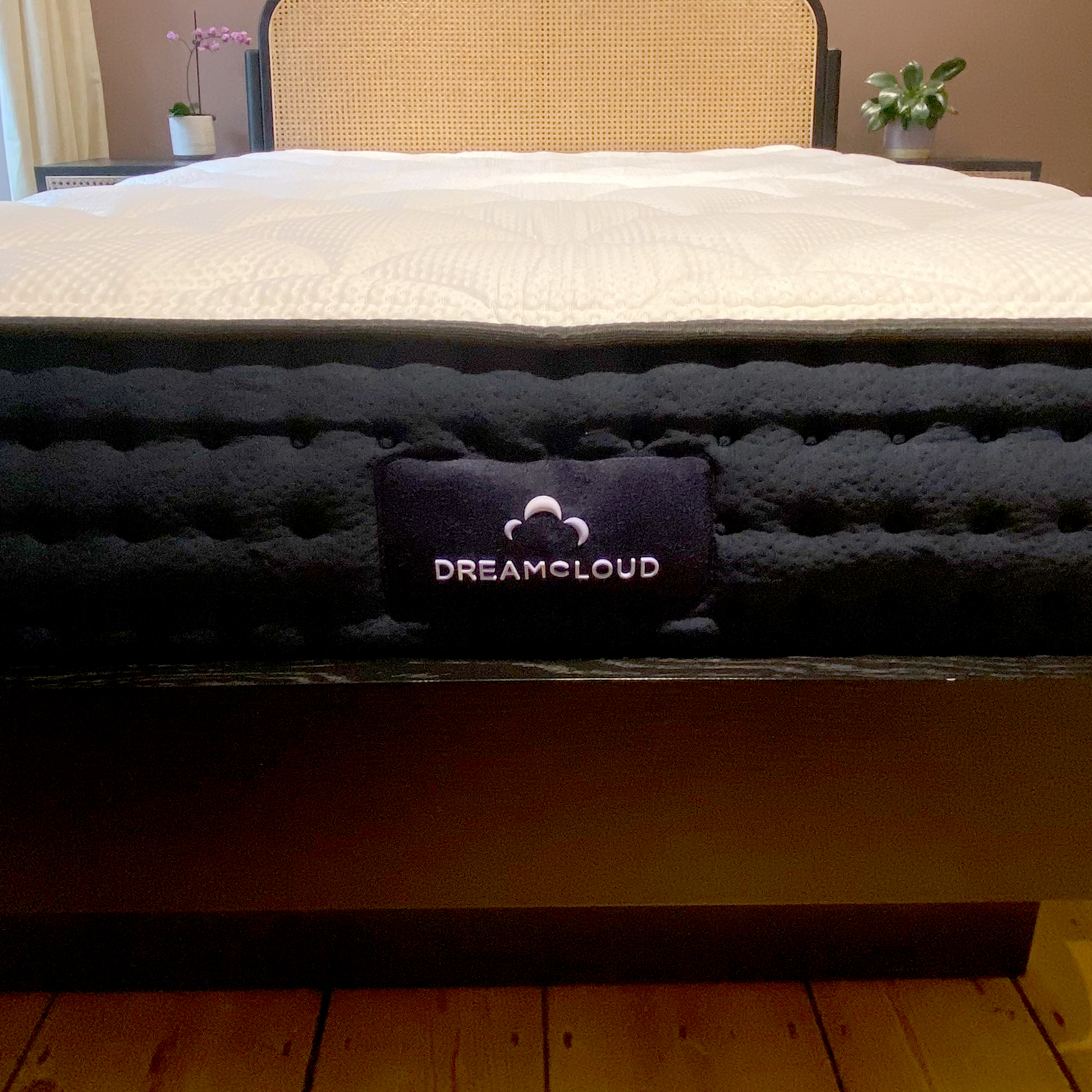
7. Ease of care
DreamCloud recommends rotating the Hybrid mattress every three months, and with four sturdy and very comfortable side handles, this is easy to do.
That said, the mattress did feel heavy to lift on my own. Weighing 39kg for a double (28kg for a single, 45kg for a King, and 52kg for a Super King), I could just about manage it but you might want to enlist some help.
The cover of this matttress can't be removed or washed, instead it’s recommended that you spot clean only. As a mother of two boys who often has guests to stay, that means I'd definitely want to pop one of the best mattress protectors over it to prevent it getting dirty or stained. The spot washing did seem effective though when I tested a small area.
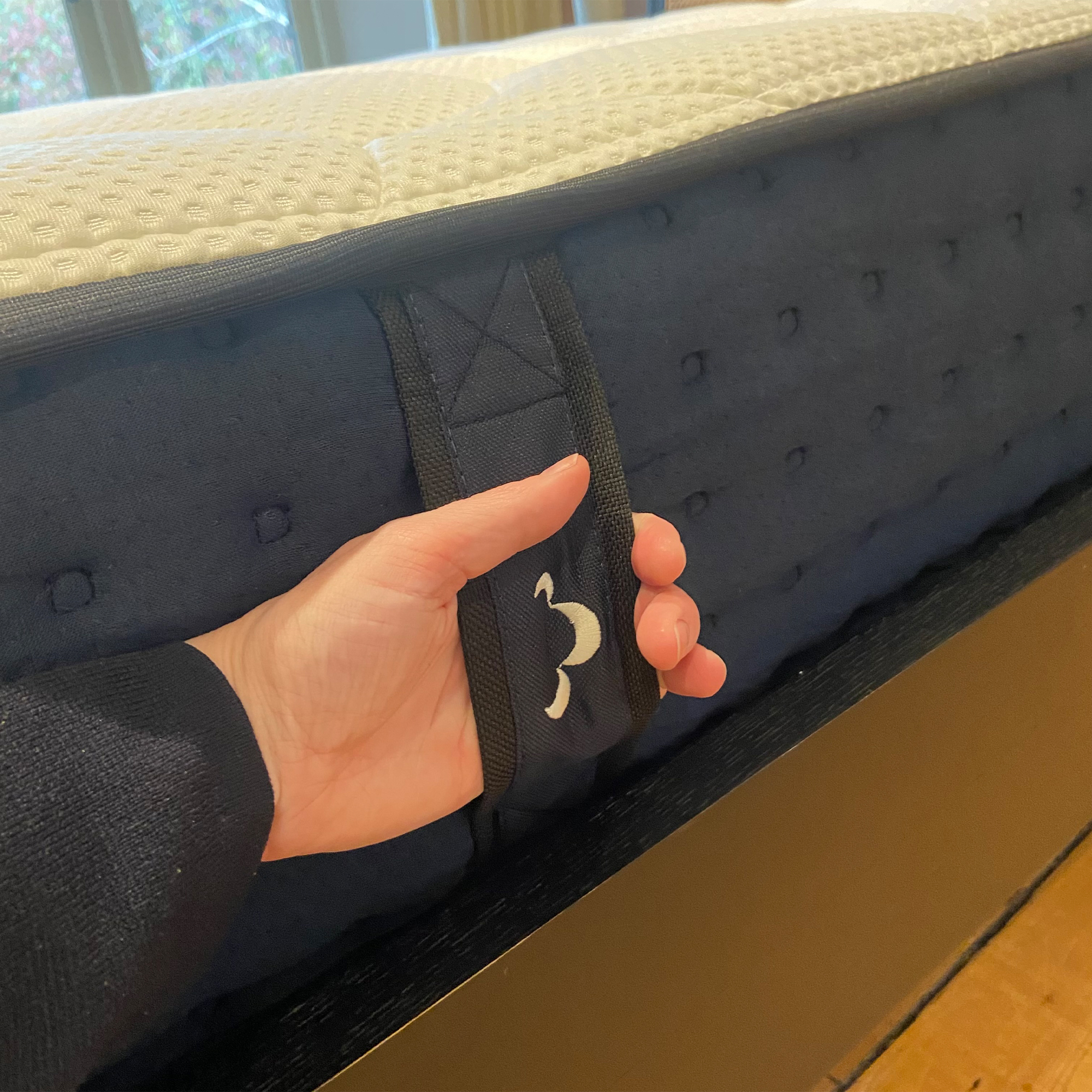
8. Delivery
In my experience, the DreamCloud delivery process was efficient with good communication. I received an email and also a text message with confirmation of my order, informing me that I would be issued with a 3-hour delivery slot one day prior to delivery.
On the morning of delivery, I was informed when the delivery was 30-45 minutes away, with a specific expected time, meaning I didn’t have to wait in for hours unnecessarily.
The mattress arrived rolled and boxed, meaning it was easier to manoeuvre up our awkward, narrow staircase. The only downside was that the delivery team didn't carry the mattress upstairs like previous mattress deliveries I’ve received.
Doorstep delivery comes as standard, although you can pay an extra £15 at checkout for room of choice delivery, which, considering the weight of the mattress, I would recommend.

As of writing, DreamCloud doesn’t offer a 'white glove' unpack and installation service. Although for an additional £45, you can add on the removal of your old mattress at the checkout when you place your order.
Once my husband and I had wrestled the mattress upstairs, unboxing and unwrapping were easy enough. Plus, DreamCloud provides a handy cutting tool to make sure you don't damage the mattress when removing the thick protective plastic.
Once unrolled, the mattress took a few hours to fully inflate, and thankfully, there was no strong off-gassing smell like many synthetic mattresses have.

9. Third-party reviews
On the DreamCloud website, there are currently 1536 reviews of the Hybrid mattress, with an overall rating of 4.4 stars. The brand as a whole also gets a 4.4 out of 5-star rating on TrustPilot.
The majority of the reviews I read were very positive about the comfort and support the Hybrid mattress offers, although some mentioned finding it either too soft or too firm. Personal preference, body weight, and even the type of bed base you have can affect how a mattress feels, so I guess this is going to be the case with most mattresses.
I did find some reviews that commented on the mattress having an off-gassing smell, although I didn't experience this with the mattress I tested. Other reviewers also mentioned a lack of edge support, which isn't something I found, but again, this could come down to weight differences.
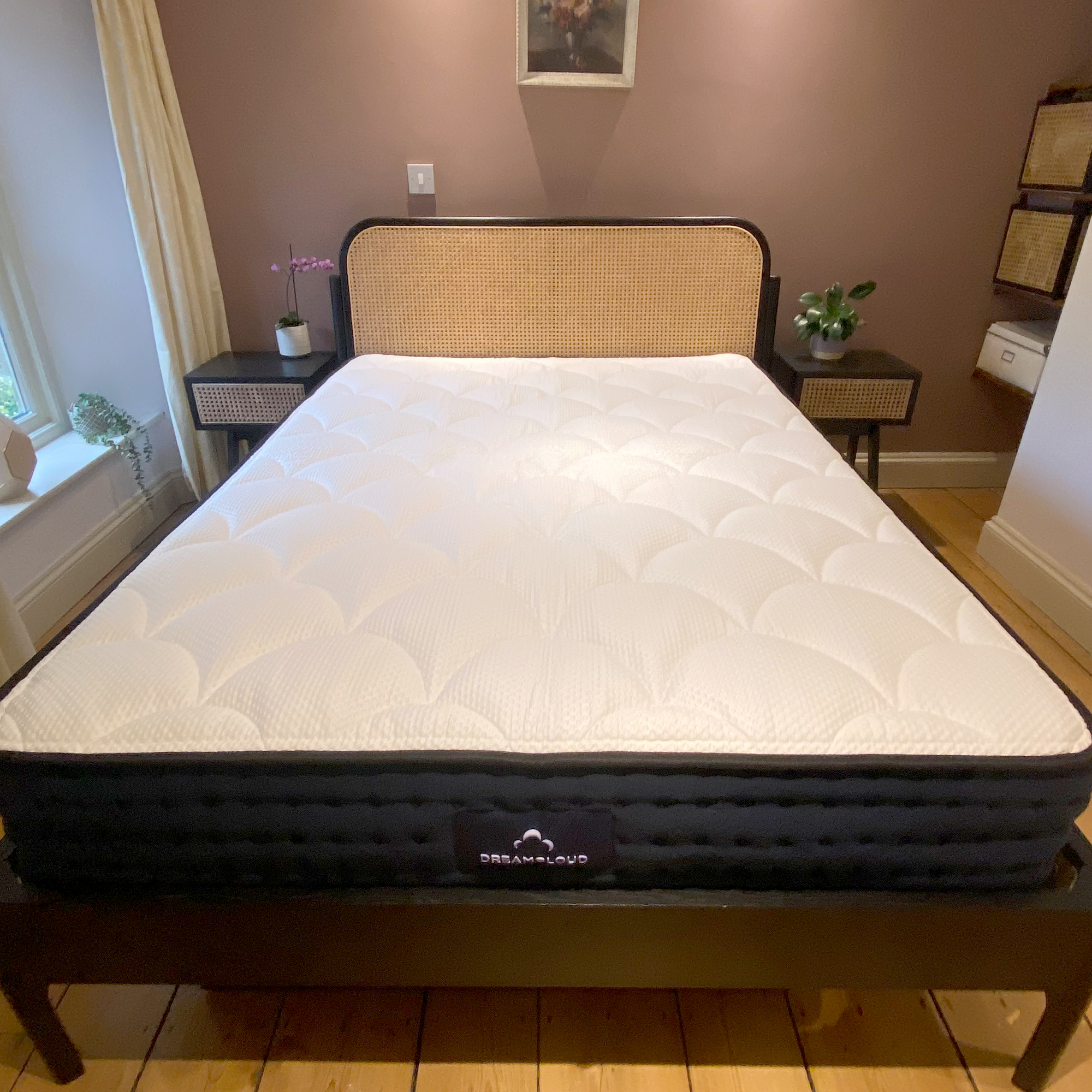
10. Environmental impact
Unfortunately, I didn't find much information about any efforts to make its mattresses or production processes more environmentally friendly on the DreamCloud website.
I couldn't see that any of the materials used in the mattress construction are from recycled sources, and the brand doesn't offer much information on its production processes compared to competitors.
This is in contrast to mattress-in-box brands like Simba which is very transparent about its efforts to lower its environmental impact.
11. Value for money
Overall, I think this mattress offers great value for money. Currently costing £525 for a double, it's one of the cheapest mattresses I've tested that offers this level of support and attention to detail in its design.
Comfort-wise, I found it on a par with the Simba Hybrid Essential mattress, but Simba's entry-level mattress costs £649 for a double, is only 20cm deep compared to the DreamCloud Hybrid's 25cm depth (which means less support), and the DreamCloud has far better edge support.
My husband, however, still favours the Simba Hybrid Essential as he thinks it provides better motion isolation, and admittedly, Simba does put a lot more effort into making its mattresses as low-impact as possible, environmentally speaking. DreamCloud has less evidence of efforts in this regard, from what I could see.
I also think this mattress is significantly better than the Emma Hybrid Original mattress I recently reviewed. Emma's most affordable mattress does only cost £418 for a double, but I'd rather pay the £100 extra as the DreamCloud Hybrid felt firmer, more supportive, and overall better quality side by side. The same applies when I compared it to the REM-Fit Hybrid Pocket 1000 mattress, which retails at £449.99.
If you're looking for a budget-friendly mattress around the £500 mark, I think this is one of the best of the bunch.
How I tested

I’m Rachel, a mother of two and a freelance reviewer who helps the Ideal Home team put mattresses through their paces to find our top recommendations. For this review, I tested the DreamCloud Hybrid Mattress on a slatted bed base.
My sleep stats:
Sleep position: back or side
Tension preference: firm
Sleep problems: lower back pain and/or neck pain and occasional overheating
Height & weight: 5"5 and 9.5 stones
In putting the DreamCloud Hybrid Mattress through Ideal Home's mattress testing process, I assessed ten factors that we deem vital to any mattress purchase.
I tested the mattress for comfort, motion isolation, responsiveness, temperature regulation, and edge support. This means that myself (and my husband) slept on the mattress for a month before I wrote my review.
I also took into consideration ease of care, any sleep trials available, the delivery process, its value for money, and, where possible, researched third-party customer reviews – to see if they aligned or were at odds with my own experience – before writing my own review and giving this mattress a star rating.

After graduating with a BA Hons in English Literature from The University of Leicester, in 2002 Rachel Tompkins studied for a Postgraduate Diploma in Periodical Journalism at City University, London. She began her journalism career as a staff writer on women’s weekly magazines before leaving her Features Director role to go freelance after having her son in 2012. Now the mother-of-two lives in Oxfordshire and writes in a freelance capacity across a range of national newspapers and magazines.
You must confirm your public display name before commenting
Please logout and then login again, you will then be prompted to enter your display name.